Martha’s Vineyard House Tour | A Gingerbread Cottage Reborn
A Martha’s Vineyard summer gingerbread cottage provides a window to the island’s storied past.
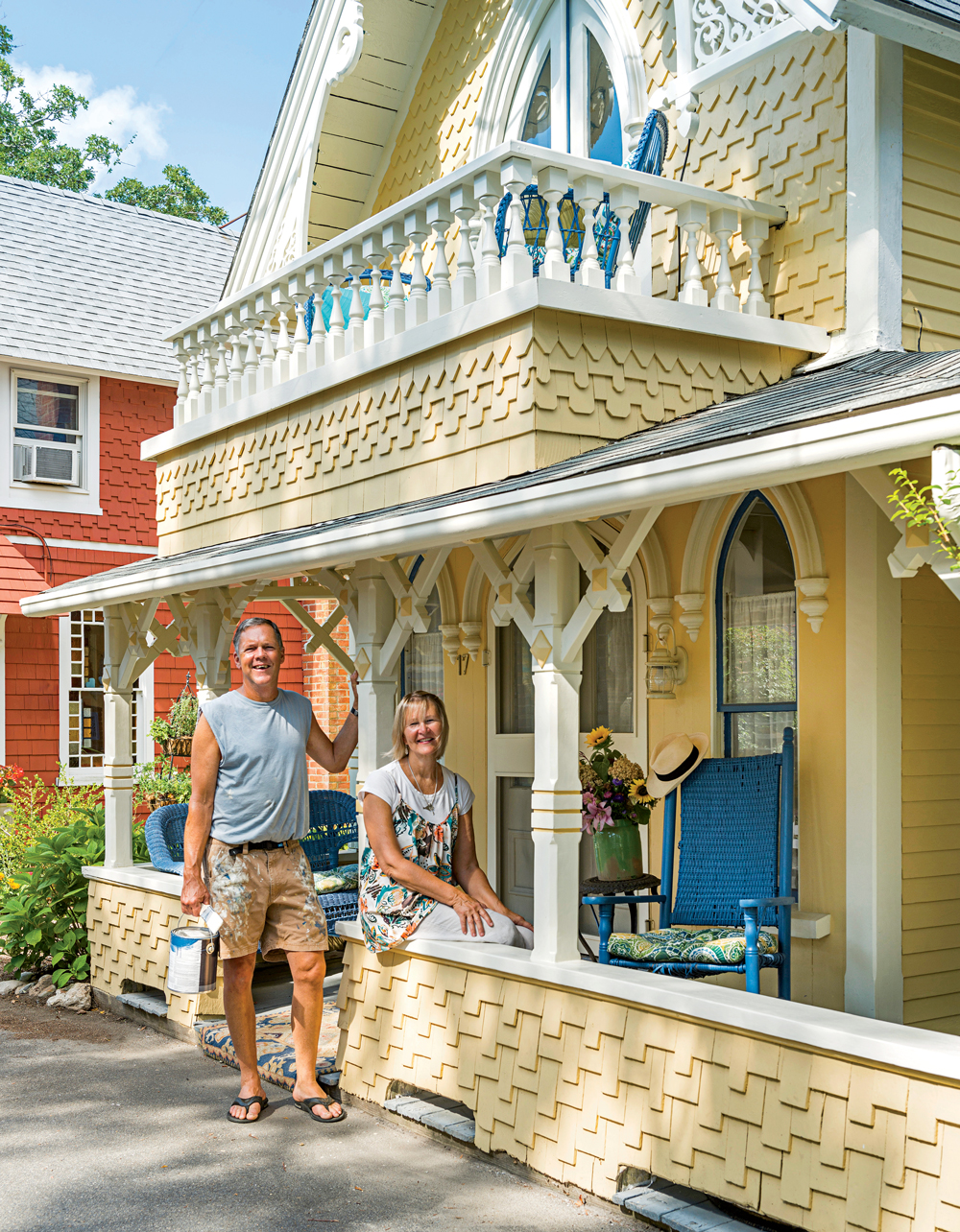
Coffee By Design | Portland, Maine
Photo Credit : Katherine Keenan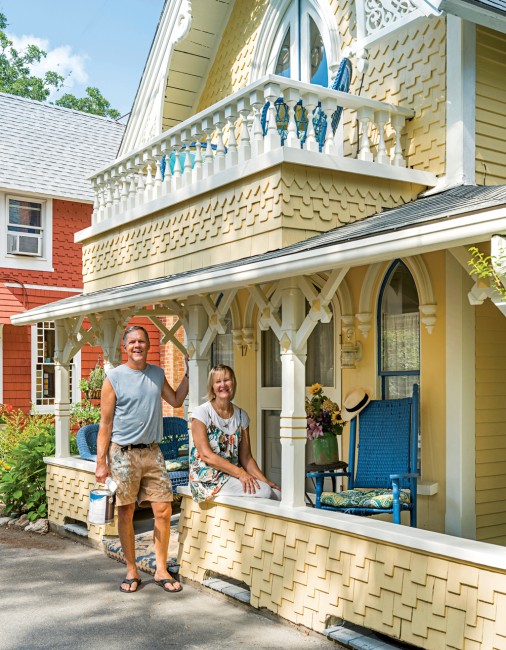
Photo Credit : Nat Rea
Tucked between the kitschy chaos of Circuit Avenue and the breezy shores of Oak Bluffs Harbor, Wesleyan Grove feels like a world apart. Its Technicolor gingerbread cottages line maze-like paths, all leading to a village green anchored by an open-air tabernacle. It’s a place as anachronistic as it is charming, a postcard for the simpler life, free from busy streets and the bustle of commerce. But walk a few hundred yards from Trinity Park and chances are you’ll find Kathryn Allen at work on her 1871 cottage, a labor of love that has been anything but simple, even if the results are so serene.
Allen, a writer and editor who hails from upstate New York, purchased the three-bedroom house as a summer home for her family in the fall of 2012. Dubbed “Hunter Cottage” for its exterior “gingerbread” trim depicting a hunter shooting a rabbit, the sunny retreat had ample curb appeal. Inside, though, it looked more like a dilapidated hoarder’s den. To save money, she and her partner, Dick Miller, decided to do all the work themselves. But the home needed much more than just a fresh coat of paint. “It was in complete disrepair,” Allen says. “And it was packed—wall to wall, floor to ceiling—with old, broken stuff.”
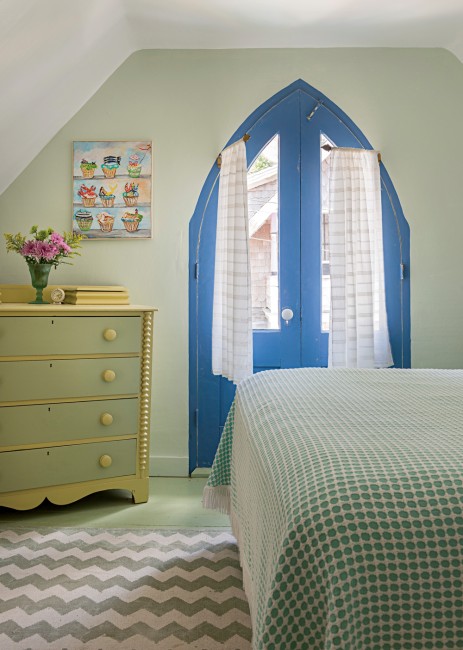
Photo Credit : Nat Rea
Of course in a house full of trash there are bound to be treasures, and as Allen began sorting, “making a zillion trips to the dump,” she set aside special evidence of her home’s rich history: posters of the 1884 presidential candidates, a 1903 typewriter, lovely antique china, and perfectly preserved 1920s toiletries. “I wanted to maintain the integrity of its past,” she says.
Allen kept as much of the original furniture as was salvageable, giving pieces gentle facelifts where she saw fit. Other items were repurposed to find new life: Kitchen cabinetry was sanded and reused; an antique ice chest doubles as dining-room storage; a bow rake with a broken handle became a one-of-a-kind wine rack. A large, ominous bureau was dismantled and repainted a custom blue to create a vanity for the upstairs bathroom, Allen’s “pride and joy.”
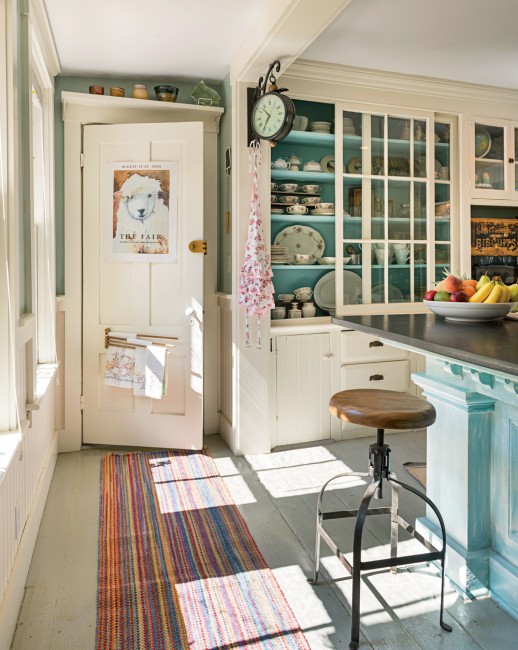
Photo Credit : Nat Rea
Outside, Allen was lucky to inherit a comparatively large patio, by Wesleyan standards. An L-shaped courtyard is just big enough to house a picnic table, yet it’s small enough to require minimal upkeep. Fresh fish and island-grown vegetables are always available for a quick-and-easy dinner, Allen says, “but Friday night usually finds us ordering take-out lobster rolls from a nearby church.” Everything the family needs is just a short walk away: the ferry, the grocery store, the hardware store, a movie theater. “And it takes all of 60 seconds to walk down to the harbor to watch the sunset,” she notes.
It’s the old-fashioned nature of the community that Allen loves most. “Our entertainment centers around reading, board games, puzzles, cocktails on the porch, or chatting with neighbors and tourists as they walk by,” she says. And every Wednesday a community sing echoes through the campground, creating a sense of camaraderie.
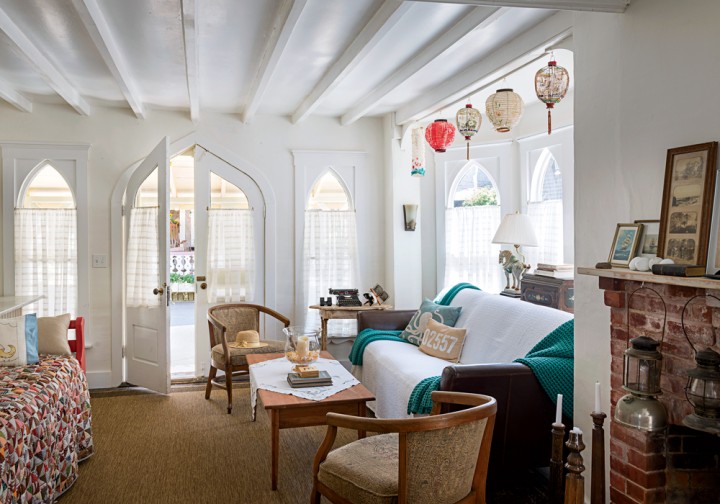
Photo Credit : Nat Rea
But the campground’s most magical night of the year—Grand Illumination Night, open to the public—is held annually on the third Wednesday of August (August 17 this year). This special event dates back to 1869, when residents hung paper lanterns from the eaves of their porches, and it still serves as a fund-raiser for the Martha’s Vineyard Camp-ground Association today. Each year, the community sing comes to a close with a lighting ceremony as the entire Grove is lit up at once with colorful Asian-style paper lanterns, some as old as the cottages themselves.
“The lanterns stay with the house,” explains Allen, who has five originals in her possession.

Photo Credit : Nat Rea
This summer marks Allen’s fourth Illumination Night in her cottage, but she’ll never forget the warmth of her very first one. That morning, a welcome committee came by with a gift basket containing a campground songbook, a directory of residents, a history of the cottage and the campground, and a very special hand-lettered lantern inscribed Allen • 1st Illumination • 2013.
“It was so unexpected. It reminded me of my childhood, when Welcome Wagon visits to new people in the neighborhood were common,” Allen recalls. “And then the whole night was marked by euphoria and also a sense of How does one take it all in?”
A Fairytale Village by the Sea

Photo Credit : Nat Rea
The vibrant cottages of Wesleyan Grove are known for their “Carpenter Gothic” architecture: Victorian with both Romanesque and Gothic Revival details, such as tall, narrow windows and round or pointed doors and arches. Funky patterns of jigsaw scrollwork (the “gingerbread”) hang from the balconies and the eaves.
The Oak Bluffs community of cottages grew out of the 19th-century religious camp-meeting movement, first introduced by Presbyterians and Southern Baptists and later perfected by the Methodists of New England in the early 1800s. These gatherings were seen as opportunities to purify body and soul, living close to nature in a state of near-constant prayer. Worshipers from far and wide came to participate in preaching and prayer and to sleep under the stars.
The first camp meeting was held here in 1835, and attendance rapidly grew into the thousands in the following years. Congregants bunked in large canvas tents arranged in a semicircle in what is today Trinity Park. Eventually, families began leasing small plots for their own individual tents.
By the summer of 1858, wooden buildings were popping up among the hundreds of tents, and a year later the first cottages appeared. The Martha’s Vineyard Camp Meeting Association was established in 1868, after a group of trustees purchased the grounds for $1,300. Over the following decade, the grounds continued to expand, as more and more permanent cottages were built. In just over 50 years, Wesleyan Grove grew into a village of famed gingerbread cottages and a cherished New England historic site.




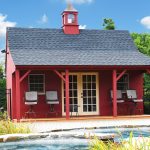


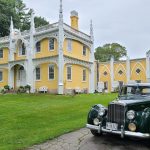
This is our 2nd summer at MV! We love it! I love the history of the island & my favorite are the gingerbread cottages & of course the shopping!!
As a woodworker, I was totally intrigued by the Cottages after my first visit to MV decades ago. This is an amazing example, however I was not aware the structures could be bought or sold?
fine article about a unique area….
Vacationed there in 1966 and later came back for day trips with family. Always loved the ferry boat ride over and back, sometimes with our car and sometimes without. Oak Bluffs always in my memory and heart.
Enjoyed this visit to a fascinating place
This was my Grandparents cottage that was in the family for 80+ years. Unfortunately I was never able to visit.